Is the new Liberty Square delivering on its promises to public housing residents?
Within a decade, Liberty City will look totally different.
That is by design. A 2016 partnership between Miami-Dade County and Related Urban, the affordable housing arm of Related Group, aimed to redevelop Liberty Square, the first public housing project in the southeastern United States, in order to transform the community. Gone will be the pre-World War II row houses awash in faded yellow, light blue, pink and green that dot portions of the block along NW 62nd Street in Miami. Gone will be the front porches and the open yards. In their place: several three-story buildings have emerged, painted different shades of gray with splashes of the aforementioned colors accented on doors and the facade. So far, three phases of 10 have been completed.
Since 2019, about 226 residents of the former Liberty Square public housing project have moved into the new properties in phases 1-3, according to Related Urban. The $300 million project will eventually feature 640 public housing units while the remaining roughly 1,200 will be a mix of affordable, workforce and market-rate. Rents for non-public housing tenants will range from $1,197 for a one-bedroom up to $2,750 for a three-bedroom unit. And though the experiment to see if this redevelopment will be a successful way to move residents out of poverty, some of the public housing tenants who relocated into the units still continue to face challenges in their new environment.
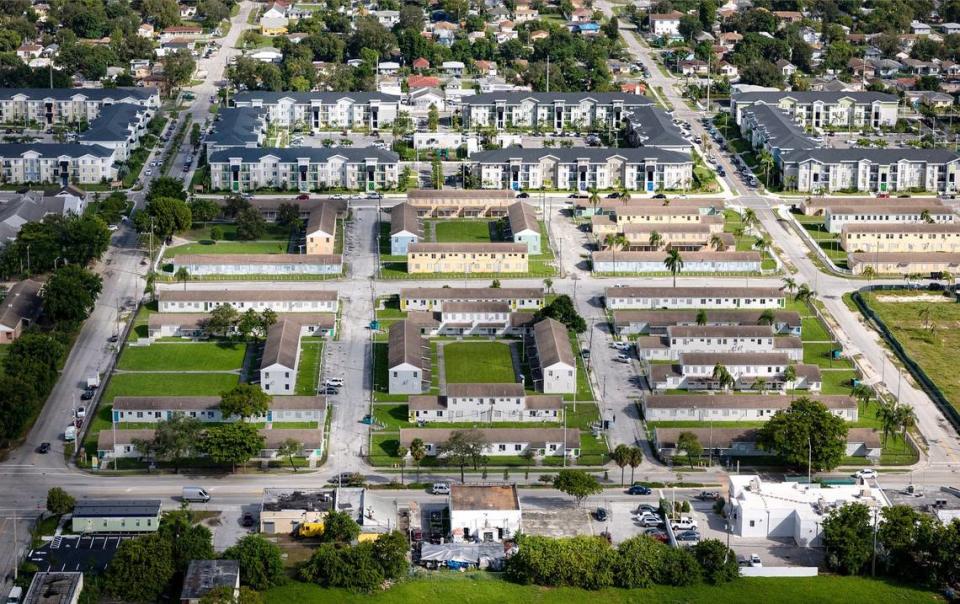
One tenant has persistent leaks. Another tenant’s wheelchair has torn up the unit’s floor. Several tenants complain of mold. Some residents simply feel that they have lost their sense of community. Older residents have raised concerns about using safety, noise and the new appliances. And several tenants expressed concerns about presenting problems to the development’s management, TRG Management, a subsidiary of the Related Group, saying they take a long time to respond. The Herald heard from about a dozen residents about Liberty Square who wanted to express their concerns. Many, however, did not want to use their names due to fear of intimidation.
Related Urban says that a lot of the issues that residents are experiencing are standard in new construction and that they have addressed them as they arise.
Individually, the concerns sound pretty manageable. In aggregate, they point to the growing pains experienced by a community in the midst of a cultural shift that perhaps neither the residents nor the developers of Liberty Square fully understood. A combination of the isolation of the pandemic, poor communication and lack of access to social services likely only aggravated tensions. Then came the documentary that showed life through the eyes of Liberty Square’s public housing residents.
A changing Liberty Square
Related Urban’s Liberty Square is block by block replacing its predecessor, colloquially known as the “Pork ‘n Beans.” The original Liberty Square opened in 1937 as the first public housing project in the southeastern United States. Black Miamians moved into Liberty City’s new housing complex, many glad to abandon their wood framed homes in nearby Overtown with no electricity or running water.
The original 55-acre Liberty Square offered new concrete one and two-story row houses with groomed lawns and fences. Black Miami historian Nadege Green, said the community offered everything residents needed, providing for the first iteration of a robust live-work-play community. In addition to housing, residents had access to a community-run grocery story, daycare and doctor’s office at a community center.
“This was considered moving on up,” Green said.
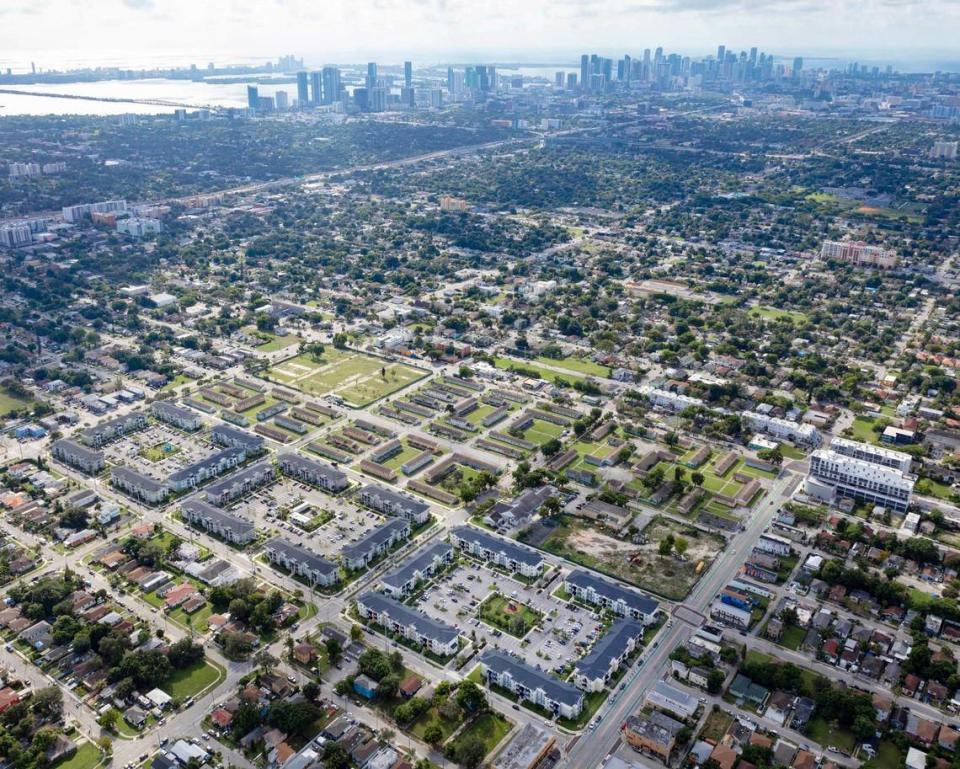
The community attracted residents from all over Miami, including the Herald’s first Black female reporter Bea Hines. Hines moved into the community with her family in 1952 when she was 14 years old. In 2019 column, she wrote that back then it was “one of the best places for blacks to live in the city.”
Everything changed in the 1960s. Money dried up and the buildings deteriorated from lack of maintenance. Blame the federal government, Green said, for the poor upkeep. Decades later, during the McDuffie riots in the 1980s, much of the neighborhood went up in flames and businesses went bust. Federal funding failed to reach the community then again too to help it recover. That, plus the influx of crack, led to the surrounding neighborhood of Liberty City becoming a hotbed for crime. A 1994 Herald article stated that the area itself accounted “for about 30 percent of all Miami homicides and 6,000 drug arrests” over a period of a year and a half.
Fast forward to the mid-2010s: talks began between the county and Related to raze and revitalize the neighborhood in phases with a new $300 million Liberty Square. Miami-Dade County partnered with Related Urban to redevelop Liberty Square in 2016, part of the developer’s appeal was the very fact that the company wanted to transform not just the buildings but the community itself. Related’s project came with commercial tenants, retail, a supermarket plus would have a Jessie Trice Community Health Center, a school and robust social services available.
“We are committed to actually helping this community,” Related Group Vice Chairman Adolfo Henriques told the Miami Herald.
‘We were promised better’
Some residents who have moved into their new units are skeptical.
“This doesn’t remind me of Liberty City,” said public housing resident Samantha Kenley, calling the new building a “beautiful facade.” A mother of seven kids, Kenley made the decision to stay in the community that raised her in part due to the familial atmosphere and the guarantee of a better unit. Kenley’s unit, however, has had many problems including a cracked ceiling that leaks during heavy rain, rusted hinges and mold, which she claims gave her youngest son asthma. Management, she says, did little to help solve her issues.
“We were promised better,” Kenley said.
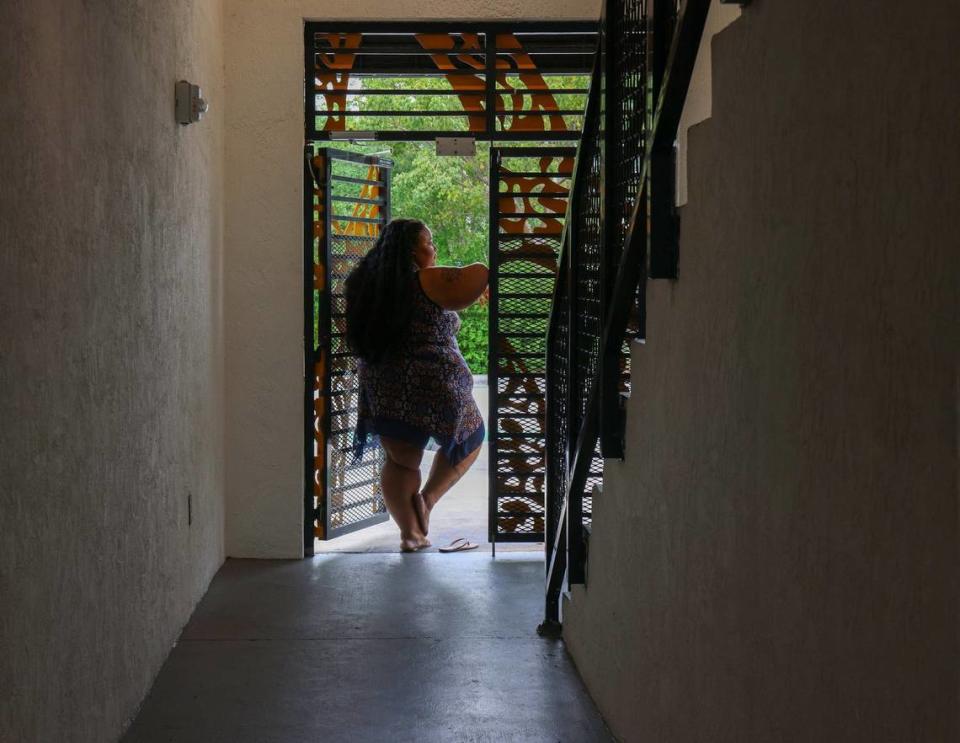
Another resident, Cheyenne Duncan, also claims to have lost 40 lbs due to the mold in her unit. The 29-year-old has lived in Liberty Square with her two children since 2021 and has faced problems for most of her time. At first, the toilets kept clogging. Then the counters kept flooding due to what she believed to be a cracked pipe. And finally, water began to drip into the unit from the ceiling whenever it rained. Maintenance came and repainted the walls but the mold only continued to grow.
“It makes me feel sad,” Duncan said, holding her 4-year-old daughter Queen in her arms. “Every month, I have a hospital visit.”
The water from the broken pipe even seeped into her neighbor’s unit, weakening the floorboards. Eventually, the floorboards broke under the pressure of the resident’s wheelchair. The floorboards were fixed after the Herald started its inquiry into Liberty Square —more than two years after initially complaining, according to the resident. Information about tenants’ repair requests was asked for but Related Urban told the Herald it would not be provided.
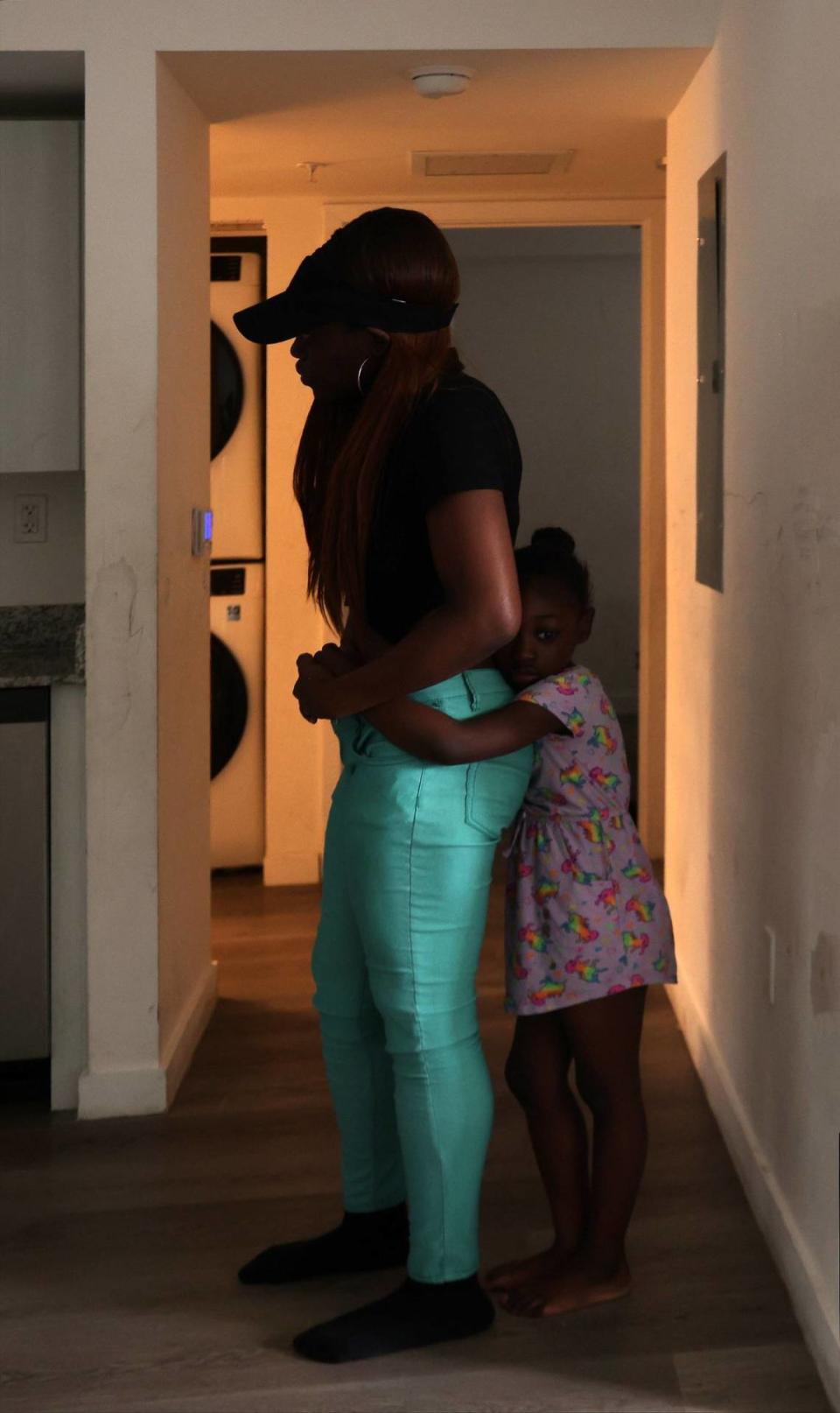
Some of the issues that residents cited — including Kenley’s leaky ceiling — came to light in “Razing Liberty Square,” a 2024 PBS documentary by filmmaker Katja Esson, which explored how the public housing project’s redevelopment and climate gentrification have impacted the surrounding neighborhood. A subsequent town hall in late March allowed more residents to speak their mind, this time in front of County Mayor Daniella Levine Cava and Public Housing and Community Development director Alex Ballina.
In that town hall, dozens of residents complained about issues like leaky ceilings and mold to a lack of handicap accessible accommodations like parking spaces and ramps. At the meeting Ballina pledged to have better communication with residents in order to hold his department accountable.
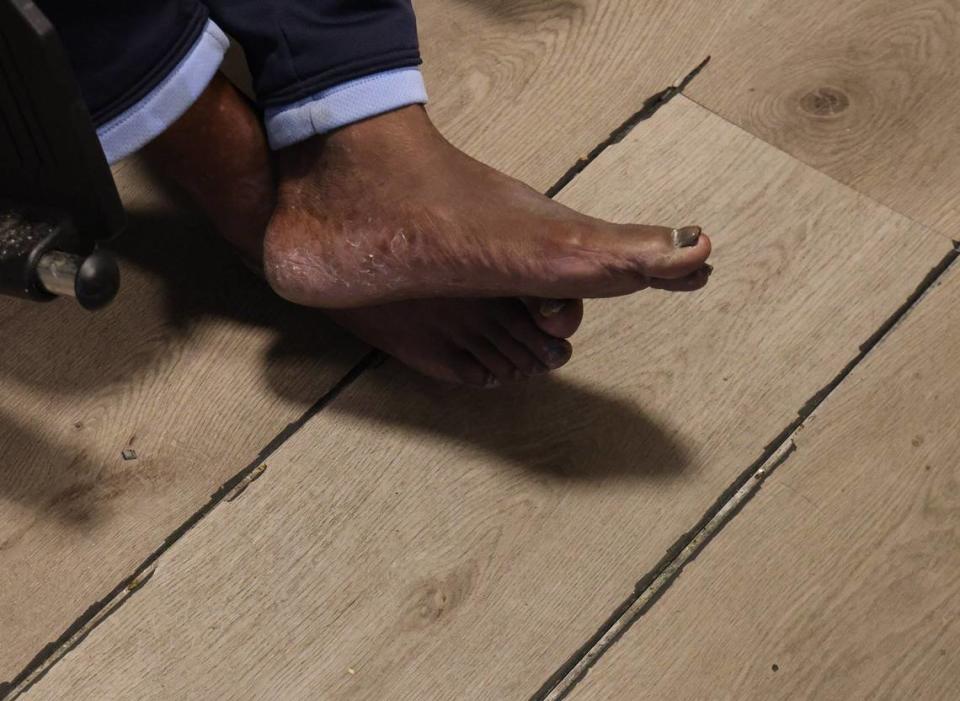
The elderly residents of phases 1-3 have their own particular set of gripes, from security to the noise that echoes through the hallways to kids running through the building at all hours of the night. One resident described the facility as “no place for senior citizens.”
“I don’t get any sleep,” said an elderly resident who requested anonymity. “They slam that door all night and the alarm goes off.”
The resident also complained she was unable to use many of the appliances. The stackable washer-dryer unit, one of the main draws to Liberty Square, requires the elderly resident to stand on a stool.
“I want to move but I can’t,” the resident added.
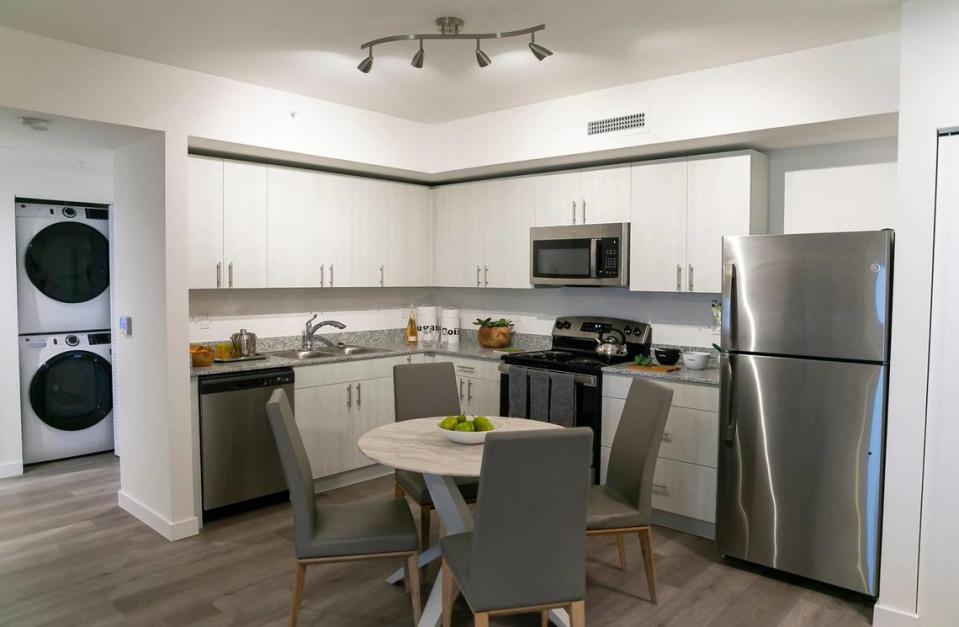
Another resident said that after first moving into her apartment in 2021, a clogged pipe caused feces to erupt from the bathtub drain and toilet. The resident has long since moved to another unit on the property. But the resident thought maybe the incident was indicative of bigger issues — especially considering that it took roughly two weeks for it to fix.
“It’s a new building— it shouldn’t be having problems,” the resident said.
Related officials explained to the Herald that the issue arose because of a soda bottle stuck in a pipe and took a while to resolve because of the severity of the damage. And the emergence of cracks like what Kenley experienced in her unit is a reality in new buildings.
“Every building has settlement,” Related Urban President Albert Milo Jr. said, later adding, “Even high end condominiums that Related Group builds have issues that always have to come back and be addressed.”
As for the seniors, Related says that they are now going to build phase 9 concurrently with phase 5. Phase 9 will be specifically for seniors.
Communication and services
In response to the complaints, Related officials admitted that the issues with residents are twofold. On one hand, there’s an issue with communication. Prior to the COVID-19 breakout, they hosted frequent meetings —Milo Jr. said he attended about 70— with the residents.
And on the other hand, Related officials also didn’t fully realize the importance of having the social services component available immediately, as some of them are still on the horizon, and they didn’t account for the learning curve when moving public housing residents into units that have modern appliances and require ongoing maintenance.
“We actually start with a training program — we’ve done that,” Henriques said. “And what we have now learned is that we have to do more ongoing training, which we didn’t totally understand before.”
Related officials said they plan to create a program called Residents Care to help residents who find maintenance and upkeep challenging. They plan to do periodic inspections to check in on the conditions of the units, though they say residents are hesitant to allow it.
To foster better communication between management and residents, Related hired Nathaniel Joseph to be a liaison.
“Now I get a chance to fix the problem and come with solutions,” said Joseph, a Miami native with a background in social work. Part of his solutions included weekly meetings with the residents and a suggestion box. Future services will include seminars on a range of topics including conflict resolution, financial literacy and fatherhood.
“I’m here to serve my community,” Joseph said.
For activist Anna Williams, who grew up in Liberty Square and now works to organize current residents into a collective voice, there will always be a disconnect. “Private sector management is not trained for that environment… They aren’t used to dealing with people in public housing.”
The redevelopment of a vulnerable community needs to come hand in hand with an aggressive plan to address the underlying needs, says criminologist and University of Miami professor Alex Piquero.
“You look at the history of that area, it has always been underfunded, under-resourced,” says Piquero, listing issues like underperforming schools, poverty and substandard housing. Redevelopment “alone is not going to solve the problems that have been existing in that community for so long. You have to put the resources in to take care of communities. Until that happens, you’re not going to see substantive change on the things that really matter, which are kids’ outcomes with respect to education, health and welfare.”
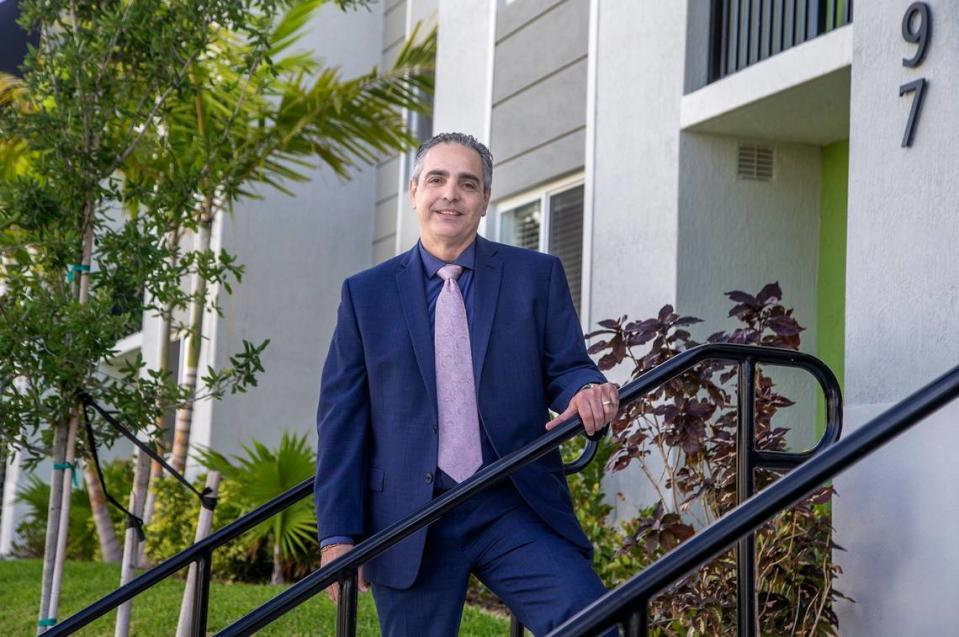
Related Urban, however, affirms that they are committed to addressing the needs of the community. “This was never just about housing for us,” Milo said. The issues residents are raising, says Related Urban, represent a small portion of the 226 public housing units already occupied. They also feel like the documentary created a false narrative around their project.
“The underlying premises covered in that documentary are untrue,” said Henriques. ”A land grab, gentrification based on climate change – none of that is true and continuing that kind of dialogue does nothing to help anyone.”
But as the redevelopment of the neighborhood continues into the next phase, Liberty Square public housing tenants are in the process of voting for new residents council leadership so that they will be able to speak with a collective voice as other issues arise.

